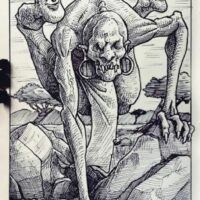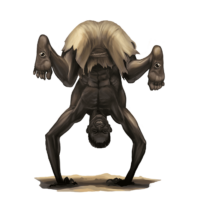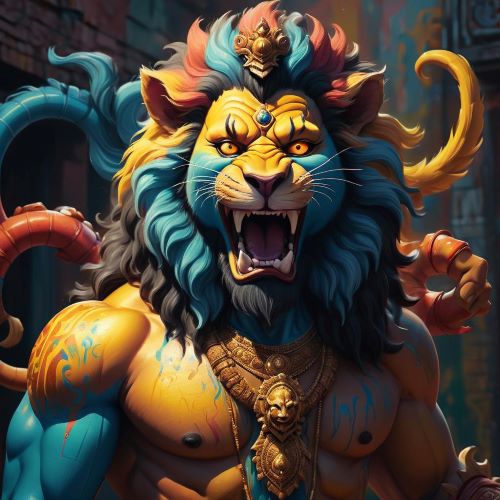Hayagriva : The Horse Headed Avatar
Listen
At a glance
| Description | |
|---|---|
| Origin | Indian Mythology |
| Classification | Hybrids |
| Family Members | Vidhya Lakshmi (Wife) |
| Region | India |
| Associated With | Wisdom, Learning |
Hayagriva
Introduction
Hayagriva, meaning “horse-necked one,” is a celebrated deity in Hinduism and Buddhism, revered as a guardian of knowledge and the personification of wisdom. In Hindu tradition, he is most often recognized as an incarnation of Vishnu, who assumed this form to restore the stolen Vedas. His horse-headed appearance represents purity, intellectual strength, and the clarity of divine thought, while his stories emphasize the eternal triumph of spiritual learning over ignorance and chaos. In Buddhist traditions, Hayagriva takes on a more wrathful presence, symbolizing fierce compassion that destroys obstacles to enlightenment.
Physical Traits
The imagery of Hayagriva varies significantly depending on whether he is portrayed in Hindu or Buddhist contexts. In Hindu iconography, he is radiant and peaceful, depicted with a human body, a horse’s head, and a luminous white complexion. Seated on a white lotus, he wears garments of similar purity and radiance. His four hands carry sacred objects: a conch and discus representing cosmic order, a book signifying learning, and a gesture of blessing that assures devotees of his guidance. His serene face and calm posture underscore his role as the preserver of knowledge rather than a warrior deity.
By contrast, Buddhist depictions emphasize his wrathful nature. He is often shown with a red body, multiple arms, and an additional horse head neighing above his own, symbolizing the thunderous voice of Dharma. These forms highlight his aggressive stance against ignorance and ego, with weapons such as swords or threatening mudras in his hands. Some esoteric images include three glaring eyes, wings, or several faces, each reinforcing his terrifying yet protective aspect. Regardless of the tradition, his horse imagery remains central, embodying both speed of thought and purity of spirit.
Family
As an incarnation of Vishnu, Hayagriva’s divine family connections are deeply rooted in Vaishnavism. He is often worshipped with his consort Lakshmi, specifically as Lakshmi-Hayagriva, where she represents fortune and wisdom, complementing his embodiment of knowledge. Temples in South India, particularly in Mysuru, uphold this form in daily rituals and festivals.
In Tibetan Buddhism, his lineage takes a different turn. Here, Hayagriva is identified as a wrathful manifestation of Avalokiteśvara, the bodhisattva of compassion. He is closely linked with Vajravarahi, his consort, and their union symbolizes the merging of compassion and wisdom to conquer ignorance. Some legends also connect him to Vajrasattva, who, in mythic accounts, transforms into Hayagriva to defeat the demon Rudra. These stories highlight his dual role in both traditions—one as a calm guardian of learning and another as a fierce protector against destructive forces.
Other names
Over centuries, Hayagriva has been addressed by numerous names, each reflecting his qualities. In Sanskrit texts, he is called Hayashirsha (“horse-headed”), Vidyārāja (“king of knowledge”), and Vākpati (“lord of speech”). Some Puranas also mention him as Janārdana Mādhava, especially in connection with his restoration of the Vedas. These epithets emphasize his role as the protector of sacred sound and divine wisdom.
Beyond India, his presence expanded into Buddhist and Taoist pantheons. In Chinese Buddhism, he is known as Mǎtóu Guānyīn or “Horse-head Avalokiteśvara,” where he is integrated into the bodhisattva traditions of Guanyin. In Taoism, he appears as Mǎ Wáng, the Horse King, a deity connected to travel and protection. Japanese Buddhism venerates him as Batō Kannon, counted among the six manifestations of Avalokiteśvara, and worshipped particularly as a guardian of horses. These different names reflect the adaptability of his image across cultural and religious contexts.
Powers and Abilities
Hayagriva’s powers are anchored in his association with knowledge and learning. In Hindu mythology, his most renowned deed is the retrieval of the stolen Vedas. When demons Madhu and Kaitabha seized the sacred texts from Brahma, Vishnu assumed the form of Hayagriva to recover them, thus preserving cosmic balance. Because of this role, he is revered as a deity who safeguards sacred scriptures and is invoked by students, teachers, and seekers of wisdom for memory, clarity, and eloquence.
His powers extend beyond learning into the cosmic and martial domains. As a warrior, Hayagriva is celebrated for his ability to defeat demons and restore order, blending intellectual authority with divine strength. In Buddhism, these attributes transform into wrathful compassion, where he is believed to cure illnesses, particularly skin diseases, and protect devotees from negative spiritual forces. His terrifying appearance, complete with weapons and fierce gestures, signifies his role in cutting through delusion and overcoming inner obstacles such as pride and attachment. Thus, across traditions, his powers bridge the domains of intellect, healing, and spiritual protection.
Modern Day Influence
The reverence for Hayagriva continues to thrive in the modern era. In Hinduism, Hayagriva Jayanti is observed on the full moon day of Shravana (August), marking his divine incarnation. On this day, students place books before his image, seeking blessings for success in studies. During Navaratri, particularly on Mahanavami, Hayagriva is honored as part of educational rituals in South India. Families often include his image alongside Saraswati and Ganesha in their home altars, creating a trinity of deities associated with learning, knowledge, and wisdom.
In Buddhist regions, his image remains popular as a Dharma protector. In China and Japan, his veneration often includes appeals for safe travel and protection of horses, linking him to everyday life beyond spiritual realms. Some devotees even present vehicle license plates before his statues, extending his protective influence to modern transportation. His horse-headed imagery has also influenced cross-cultural mythologies, inspiring connections with figures like the Philippine Tikbalang and even lending his name to scientific discoveries, such as Haya griva, a dinosaur species identified in Mongolia.
Contemporary scholars and spiritual practitioners also draw on Hayagriva’s symbolism to explore the intersection of ancient wisdom and modern challenges. His presence in art, literature, and digital media underscores his enduring relevance, not just as a religious figure but as a cultural archetype embodying clarity, wisdom, and resilience.
Related Images
Source
Wikipedia contributors. (2025). Hayagriva. Wikipedia. Retrieved August 27, 2025, from https://en.wikipedia.org/wiki/Hayagriva
TemplePurohit. (2016, February 19). Lord Hayagriva – The Lesser Known Incarnation of Mahavishnu. TemplePurohit. Retrieved August 27, 2025, from https://www.templepurohit.com/lord-hayagriva-the-lesser-known-incarnation-of-mahavishnu/
Hindu Temple Talk. (2024, February 17). Hayagriva: Avatar of Supreme Wisdom. Retrieved August 27, 2025, from https://hindutempletalk.org/2024/02/17/hayagriva-avatar-of-supreme-wisdom/
Buswell, R. E., & Lopez, D. S. (2017). The Princeton Dictionary of Buddhism. Oxford University Press.
Clark, J. (2015). Tikbalang: The Horse Demon. Episode 01, Creatures Of Philippine Mythology.
Dallapiccola, A. L. (n.d.). Dictionary of Hindu Lore and Legend.
Dinamalar. (n.d.). Lakshmi Hayagrivar Temple: Lakshmi Hayagrivar Temple Details Lakshmi Hayagrivar – Muthialpettai Tamilnadu Temple லட்சுமி ஹயக்ரீவர்.
Dorjee, K. (2018). Iconography in Buddhism. Blue Poppy.
Frequently Asked Questions
What is lorem Ipsum?
I am text block. Click edit button to change this text. Lorem ipsum dolor sit amet, consectetur adipiscing elit. Ut elit tellus, luctus nec ullamcorper mattis, pulvinar dapibus leo.
What is lorem Ipsum?
I am text block. Click edit button to change this text. Lorem ipsum dolor sit amet, consectetur adipiscing elit. Ut elit tellus, luctus nec ullamcorper mattis, pulvinar dapibus leo.
What is lorem Ipsum?
I am text block. Click edit button to change this text. Lorem ipsum dolor sit amet, consectetur adipiscing elit. Ut elit tellus, luctus nec ullamcorper mattis, pulvinar dapibus leo.
What is lorem Ipsum?
I am text block. Click edit button to change this text. Lorem ipsum dolor sit amet, consectetur adipiscing elit. Ut elit tellus, luctus nec ullamcorper mattis, pulvinar dapibus leo.
What is lorem Ipsum?
I am text block. Click edit button to change this text. Lorem ipsum dolor sit amet, consectetur adipiscing elit. Ut elit tellus, luctus nec ullamcorper mattis, pulvinar dapibus leo.











